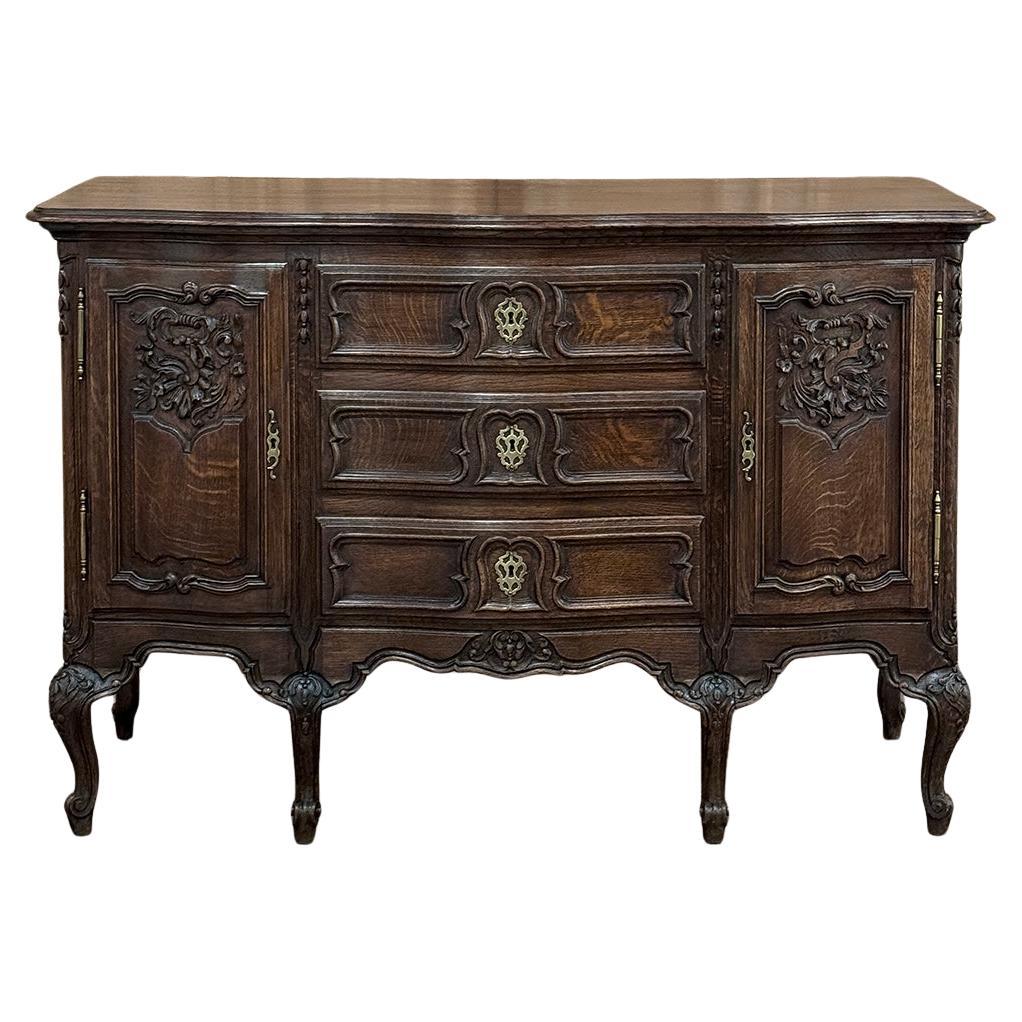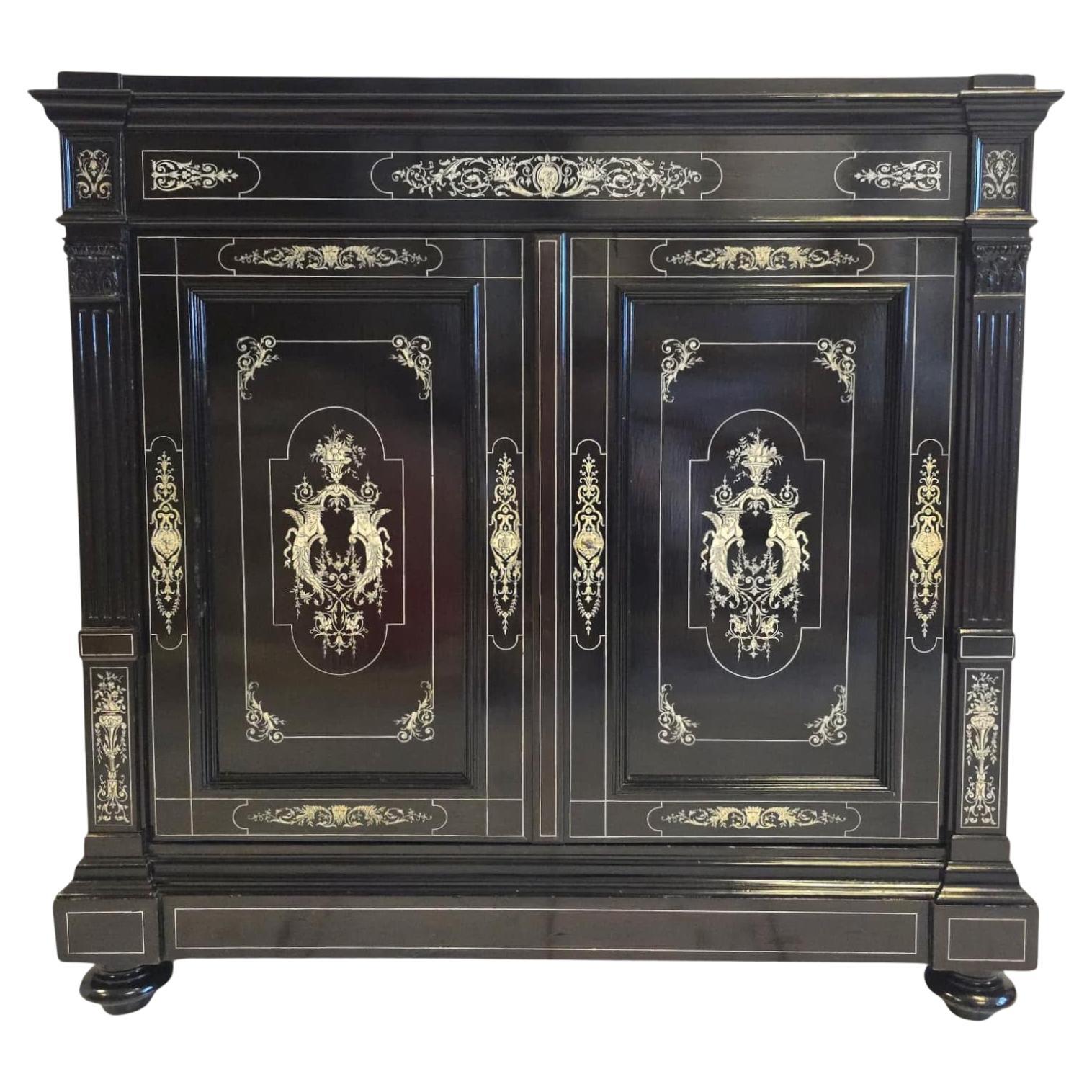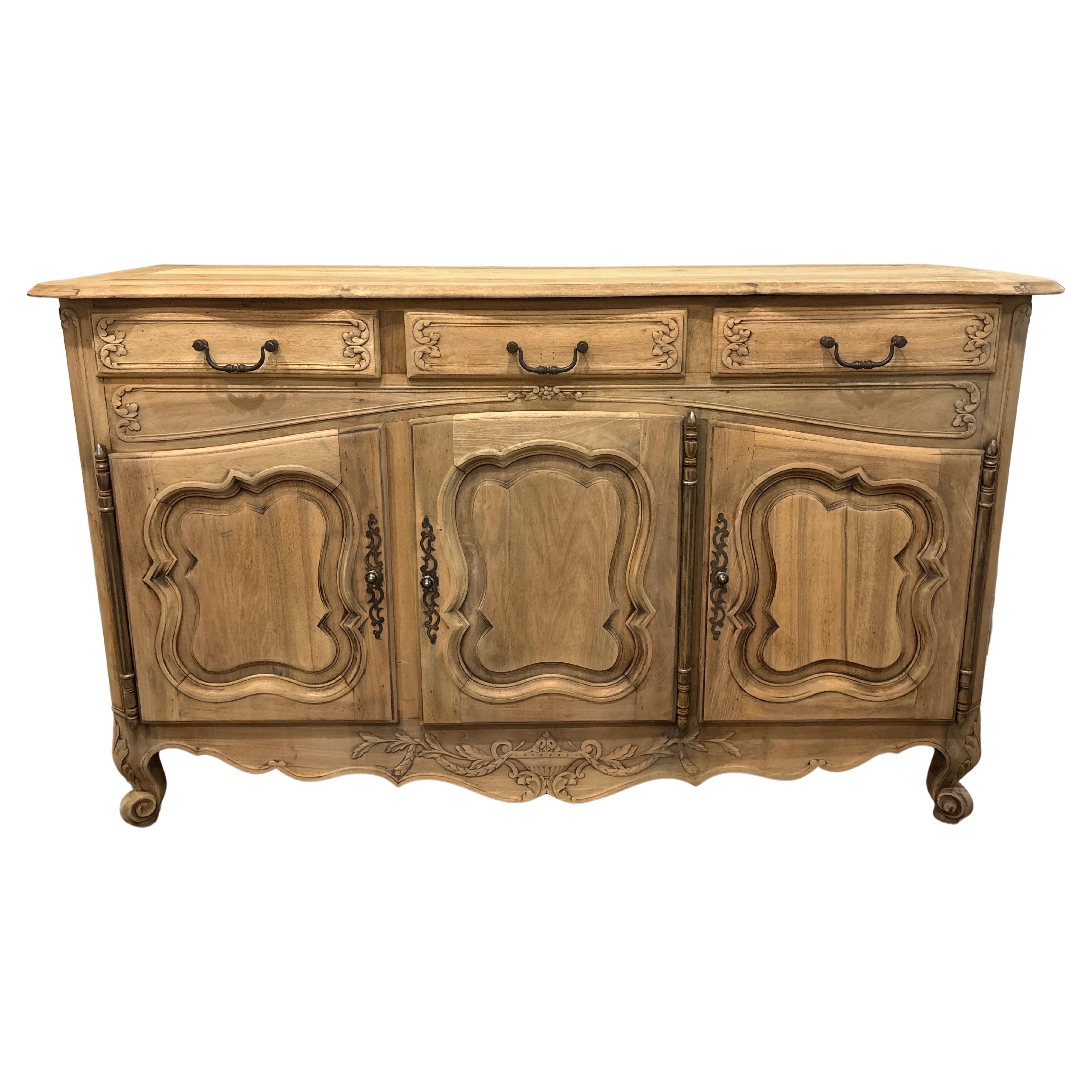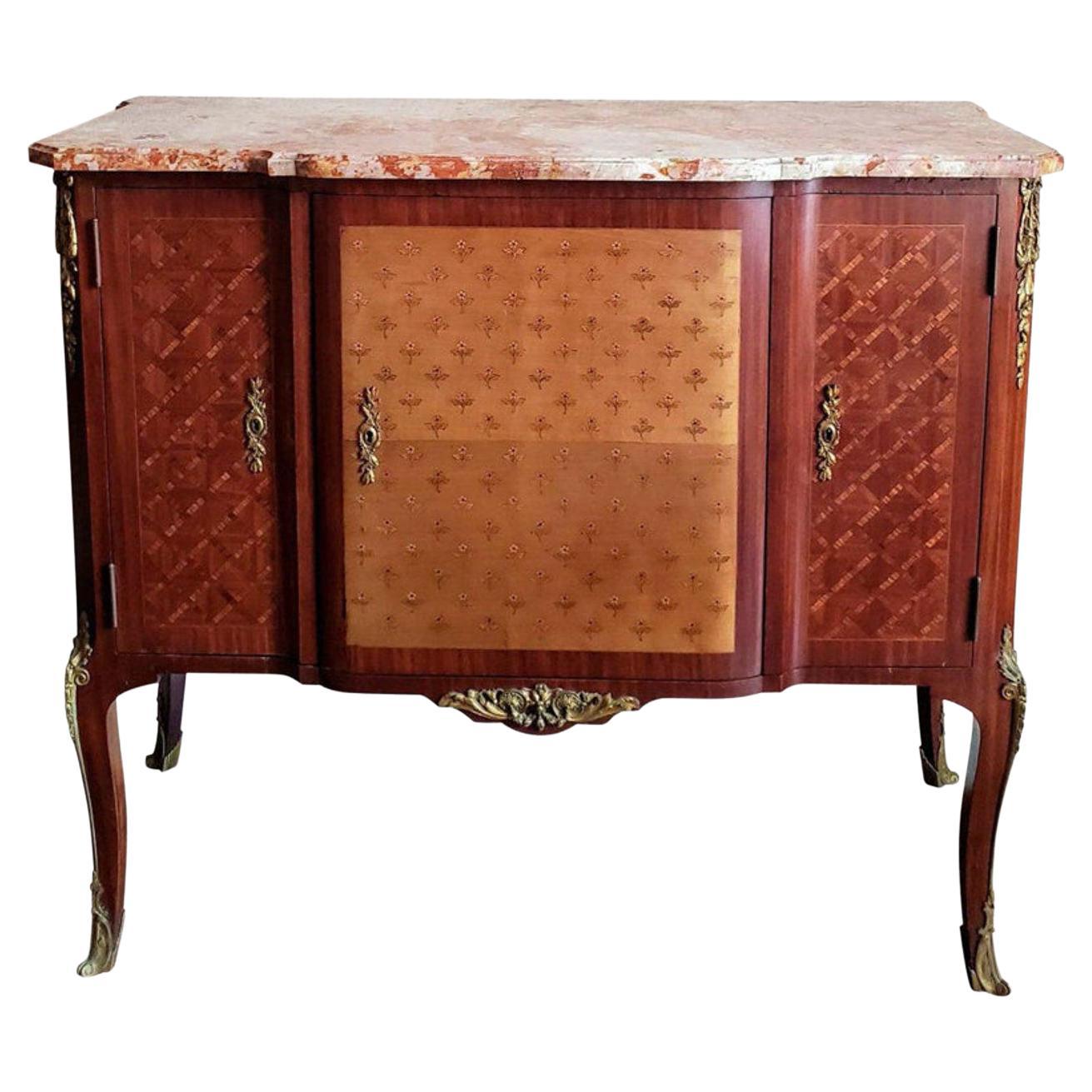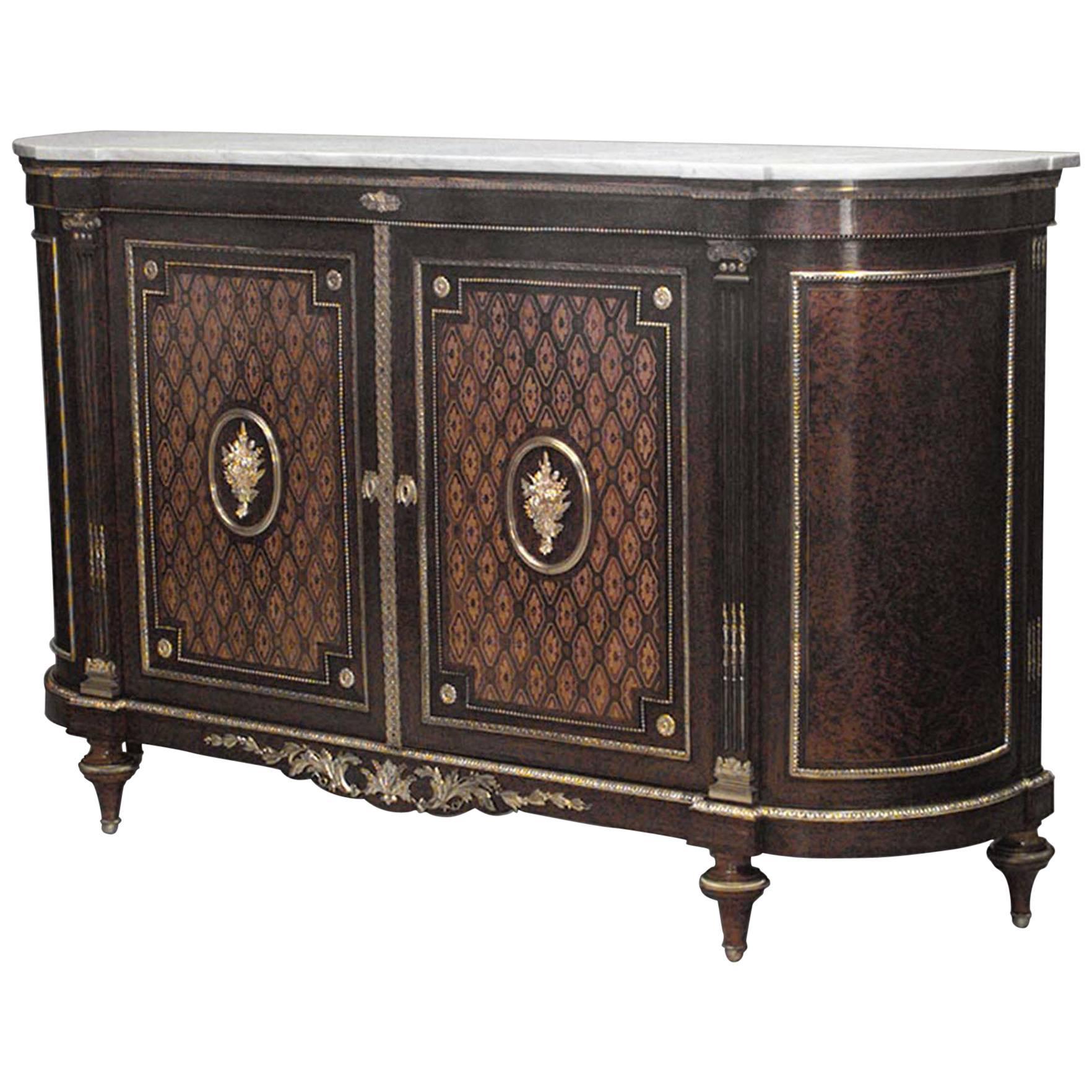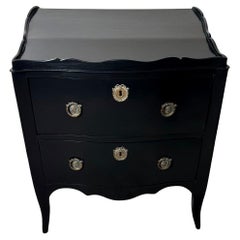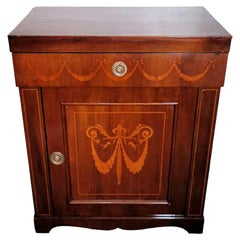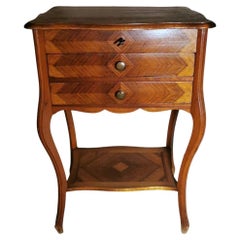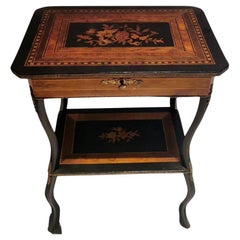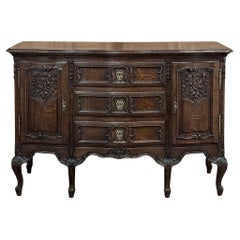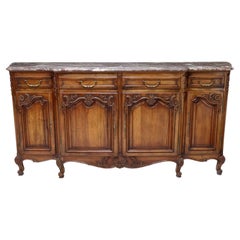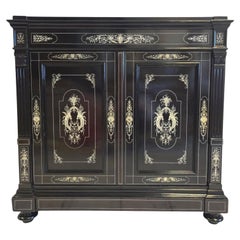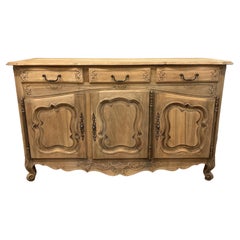Items Similar to Louis XIV Style Italian Venetian Lacquered Sideboard
Want more images or videos?
Request additional images or videos from the seller
1 of 21
Louis XIV Style Italian Venetian Lacquered Sideboard
$53,445.99
£40,061.45
€45,000
CA$73,907.78
A$80,466.73
CHF 42,966.67
MX$971,359.40
NOK 540,167.88
SEK 502,418.98
DKK 342,850.65
About the Item
We kindly suggest that you read the entire description, as with it we try to give you detailed technical and historical information to guarantee the authenticity of our objects. The following item will be shipped via a courier specialized in shipping works of art, who, given the importance of the object, will arrange for it to be viewed at the Office of Fine Arts in Florence, so the piece of furniture will be even more enhanced by the Certificate of the prestigious office in Florence.
Important and rare lacquered and painted Venetian sideboard; the cabinet has a wavy and elegantly notched trapezoidal shape, and has two large doors that when opened reveal a large interior space divided by a vertical partition and two horizontal planes; this division was made in successive epochs as was the entire interior lining for which a yellow fabric was used; the upper exterior has a top executed in a single piece shaped with soft and refined lines; the entire cabinet and the solid base follow the undulating profile of the top giving the sideboard lightness and delicacy; the exquisite original lacquering has soft and delicate colors; the refined and graceful floral decorations of the doors are also repeated in the concave side panels producing a wavy and extremely refined effect. The cabinet, made of softwood, probably spruce, is in first patina with the original ironwork of the period. It was made between 1695 and 1710 in an artisan carpentry workshop in Venice. In fact, lacquered furniture in the Veneto region was mainly produced in the lagoon city, which was an important center of production of this type of furniture during the Renaissance and Baroque periods. The workshops of Venetian craftsmen were famous for their mastery in creating high-quality lacquered furniture, such as cabinets, sideboards, desks, and tables. These pieces of furniture were often made on commission for nobles, aristocrats, and churches, and were used to embellish palaces and prestigious residences.
The late seventeenth century and the early eighteenth century are characterized by the opposition between the cold, opulent severity of 'late Mannerism and the more grandiose and stunning Baroque that was emerging. The furniture, though still firm in its tradition, feels the decline of the characters of sobriety and balance that had given Europe the measure of the Renaissance. The lines of furniture are sober and straight, but they tend gradually to soften. Characters of utility yield in the face of the increasingly important value of decoration. One of the most important features of Italian furniture in this period is the art of lacquering, known and practiced in the Far East by the Chinese and Japanese from the earliest ages; Europe began to take an interest in it only in the early 1600s. European lacquers imitated by imported ones are composed of various essences, mixed resins, and various oils. In fact, whether in France, Italy, or England, lacquers are never as hard as those from the East. This diversity consists mainly of the preparation with chalk and glue. In Italy, the wood preferred by lacquerers is cirrmolo, which has the characteristic of being light, and soft and lends itself meekly to all the stylistic adaptations of the period. The wood was left well seasoned and cut into solid curved strips that overlapped to create the stem of the piece of furniture, destined later to be sent to the lacquerer for decoration. Surfaces to be decorated where any openings and cracks had occurred, due to temperature changes or for other reasons, were covered with a strip of glued canvas. The stem of the piece of furniture was later re-plastered all over with a layer of glue so that the wood could absorb it, closing its pores; then several layers of plaster and glue were given until a homogeneous surface was achieved, which was smoothed with very fine glass paper. This is the preparation technique for Venetian furniture, which has a very thick covering of plaster and glue compared to a couple of layers of lacquered furniture from Genoa, Piedmont, and other Italian regions. Once the plaster preparation was finished, a layer of primer or color was given with tempera, after which the decoration itself was done. Once this and the gilding were finished, several layers of sandracco varnish, i.e., a rubbery complement to the varnish, were passed, which with its characteristic straw color chromatically modified the lacquering. Depending on the layers of this varnish, it was possible to obtain a warm, transparent tone: for example, a particular yellow was obtained by passing sandracca over a white background, and the classic greenish was the result of one or more layers, depending on the desired effect, over a light blue background. Lacquered furniture was a privilege of the wealthy classes, and in Venice, the great painters of the time (Guardi, Tiepolo, Zuccarelli, and Zais ) received commissions to decorate apartments and consequently create cartoons for lacquering furniture. These pieces of furniture were highly valued for their beauty and were used as valuable pieces of furniture in aristocratic residences of the time. Today, Italian Venetian lacquered sideboards from the 1700s are considered true works of art and can be found in private collections, museums, and art galleries. Measurements length cm.189, depth cm.60, height cm.100.The sideboard is in good original condition and has not undergone major restoration, only retouching or minor repairs inside for 333 years.
- Dimensions:Height: 39.38 in (100 cm)Width: 74.41 in (189 cm)Depth: 23.63 in (60 cm)
- Style:Louis XIV (Of the Period)
- Materials and Techniques:
- Place of Origin:
- Period:Late 17th Century
- Date of Manufacture:1695-1710
- Condition:Wear consistent with age and use. The sideboard is in good original condition and has not undergone major restoration, only retouching or minor repairs inside for 333 years.
- Seller Location:Prato, IT
- Reference Number:Seller: 127751stDibs: LU4632234682932
About the Seller
5.0
Platinum Seller
Premium sellers with a 4.7+ rating and 24-hour response times
Established in 1977
1stDibs seller since 2019
300 sales on 1stDibs
Typical response time: <1 hour
- ShippingRetrieving quote...Shipping from: PRATO, Italy
- Return Policy
More From This Seller
View AllLouis XV Style Black Lacquered Walnut Chest Of Drawers With Bronze Decorations
Located in Prato, Tuscany
We kindly invite you to read the entire description, as we strive to provide you with detailed technical and historical information to ensure the authenticity of our pieces.
This ele...
Category
Antique Mid-18th Century French Louis XV Commodes and Chests of Drawers
Materials
Walnut
Biedermeier Style Small Italian Sideboard
Located in Prato, Tuscany
We kindly suggest that you read the whole description, as with it we try to give you detailed technical and historical information to guarantee the authenticity of our objects.
Exce...
Category
Antique Late 19th Century Italian Biedermeier Sideboards
Materials
Sapele Wood
Louis Philippe Style French Dressing Table with Mirror and Drawers
Located in Prato, Tuscany
We kindly suggest that you read the entire description, as with it we try to give you detailed technical and historical information to ensure the authenticity of our objects.
Peculi...
Category
Antique Late 19th Century French Louis Philippe Commodes and Chests of D...
Materials
Walnut
Napoleon III Style French Dressing Table With Mirror And Faux Drawer
Located in Prato, Tuscany
We kindly suggest that you read the entire description, as with it we try to give you detailed technical and historical information to ensure the authenticity of our objects.
Particu...
Category
Antique Mid-19th Century French Napoleon III Commodes and Chests of Drawers
Materials
Bronze
Late Empire French Walnut Chest of Drawers with Bronze Handles
Located in Prato, Tuscany
We kindly suggest you read the whole description, because with it we try to give you detailed technical and historical information to guarantee the authenticity of our objects.
Frenc...
Category
Antique Late 19th Century French Empire Commodes and Chests of Drawers
Materials
Marble, Bronze
Italian Wall-Mounted Console with Marble Top
Located in Prato, Tuscany
We kindly invite you to read the full description, as we aim to provide detailed technical and historical information to ensure the authenticity of our pieces.
Elegant and refined It...
Category
Mid-20th Century Italian Console Tables
Materials
Marble, Brass
You May Also Like
Antique French Louis XIV Commode ~ Cabinet ~ Credenza ~ Sofa Table
Located in Dallas, TX
Antique French Louis XIV Commode ~ Cabinet ~ Credenza is as lovely as it is versatile! The size makes it great for a flat panel TV mo...
Category
Early 20th Century French Louis XIV Credenzas
Materials
Brass
French Provincial Louis XV Grand Regence Style Breakfront Sideboard
Located in Forney, TX
A vintage French Provincial Louis XV style carved walnut sideboard.
Hand-crafted in France in the mid-20th century, excellent quality, exceptionally executed in timeless 18th cent...
Category
Antique 18th Century French Louis XV Sideboards
Materials
Marble
Large Italian Sideboard with Marquetry – 19th Century
Located in Madrid, ES
Magnificent 19th-century Italian sideboard crafted from ebonized wood and adorned with exquisite ivory marquetry. The piece showcases refined craftsmanship, featuring intricate geome...
Category
Antique 1860s Sideboards
Materials
Fruitwood
French 19th Century Sideboard
Located in Stockbridge, GA
This wonderful sideboard is made of flamed walnut. The wood is raw and has been refinished. The front edge of the top has a curved movement.
Category
Antique Late 19th Century French Louis XV Sideboards
Materials
Walnut
$5,800 / item
Fine French Transition Louis XV XVI Style Chest Sideboard
Located in Forney, TX
A stunning, rare, and very fine quality French Transitional Louis XV - Louis XVI style mahogany inlaid marble-top chest after Jean-François Oeben / Jean-Henri Riesener.
Exquisitely hand-crafted in France, born in the late 19th / early 20th century, exceptionally executed Parisian work, retaining the original shaped marble top with contoured molded edge, over conforming solid mahogany case extensively inlaid with rich floral decoration and geometric trompe l'oeil marquetry-work. Embellished with finely sculpted and chisled gilt bronze ormolu mounts, the case fitted with three high quality locking bar mounted cabinet doors, each adorned with matched ornate escutcheon and opening thanks to the original keys, revealing a mahogany finished interior with single shelf. Featuring rare and exotic woods inlaid, all rising on bronze mounted transitional cabriole legs, ending in the finest quality patinated bronze sabots.
Its three doors do not interfere with its delicate marquetry with decorations of geometric cubes and beautiful flowers on gilt gold ground, its two flat uprights with cut sides inviting finesse and harmony, while its bronzes, with antique motifs indicate the return to refined classic taste.
A fine example of the Transition style, this chest subtly combines Louis XV marquetry with shapes that are already more rectilinear. From the middle of the 18th century, certain French artists, at the head of which the architects Blondel and Contant d'Ivry as well as the painter Louis-Joseph Le Lorrain, rose up against the excesses of the rococo style and advocated a calming of lines by the use of classical or even ancient principles. If the "Greek" style was too categorical a response to these requests, the Transition style, soon launched by the Marquis de Marigny, brother of Madame de Pompadour and Minister of the Arts, was much more measured and appreciated. Dutch cabinetmaker Matthijs Horrix was also front and center, a leader a Transition style.
Celebrated ebanista Jean-François Oeben was one of the leaders of this new taste, with Jean-Henri Riesener following in the 19th century. Oeben a genius with inlay, he gave birth to several patterns, both sober and elegant, such as the marquetry of bottomless cubes, which was adopted by many of his colleagues including Jacques Dautriche and Charles Chevallier.
Jean-François Oeben was particularly known for his "Louis XV or Transition furniture, adorned with leaf veneers, flower inlays or geometric patterns", according to Pierre Kjellberg (Le Mobilier français du XVIIIe, éditions de l'Amateur, 1989). A small secretary in the Transition cabinet...
Category
Antique 19th Century French Louis XV Credenzas
Materials
Marble, Bronze, Ormolu
French Louis XVI Style Inlaid Sideboard
Located in Queens, NY
French Louis XVI-style (19th Century) inlaid 2 door sideboard cabinet with bronze trim and white marble top.
Category
Antique 19th Century French Louis XVI Sideboards
Materials
Marble, Bronze
More Ways To Browse
Italian Lacquer
Italian Lacquer Furniture
Antique Venetian Furniture
Chinese Wood Table Glass Top
17th Century Venetian
Valuable Antique Furniture
Cabinet Hand Painted Italian Yellow
Venetians Furniture 17th Century
Wavy Cabinet
Venetian Credenza
Venetian Sideboard
Piedmont Furniture
Brazilian Rosewood Credenza
Credenza Signed
Mid Century Laminate Credenza
Rosewood Tambour
Stow And Davis
Teak Veneer Credenza
